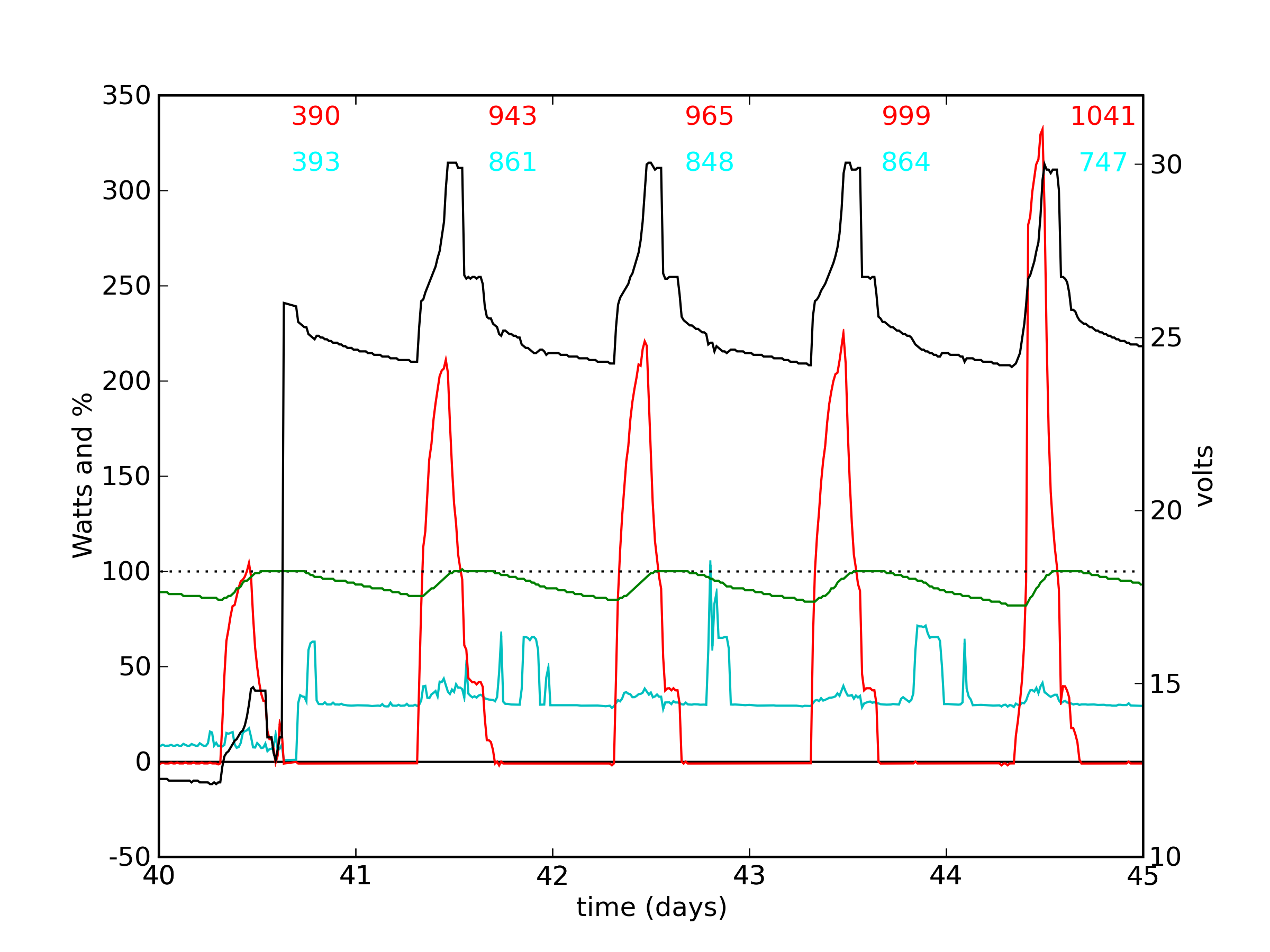
Major Reconfiguration

Having enjoyed the tremendous learning that derived from having dual PV systems, it was time to move on. I was really pleased with the performance of the 130 W multi-crystalline panel, so I bought a bunch more. My upgrades came in phases. My goal was to be able to power beefier items in my household: refrigerator, washing machine, microwave (not all at once). This demands a more capable inverter. In the spirit of overkill (and setting up for a lifetime of PV), I got a 3500 W inverter configured for 24 volts. This meant serializing my two 12 V batteries, and going to a single rather than dual system. Putting two batteries in series then means I need at a minimum two PV panels in series. So on day 40, I made the switch.
The first thing we see is a normal day on the old system: fully charged battery (note scale change on right hand side). Then things get crazy during the re-configure. First the batteries are hooked together (black line surges to > 25 volts). Then the inverter is hooked up. Look at that quiescent load (cyan)! 25 W of idle. I'm still shocked to this day! I serialized two 130 W panels before the night was over, ready for the next day. The living room lights and entertainment system were now all plugged into the single inverter.
The following three (clear) days saw > 200 W peaks, quickly recharging the batteries to 100% and entering float stage. Load usage was not particularly heavy during this period, aside from the impressively high idle draw of the inverter, which obviously dominates the load integral (area under curve).
After day 43, I added a third panel in series. This is so easy to do with a MPPT charge controller, which converts excess voltage to current at the voltage needed by the battery. The maximum power point turned out to be around 48 V and 7 A. But this was readily converted to about 13 A at 25 V for the battery.
Previous Data Set | Next Data Set